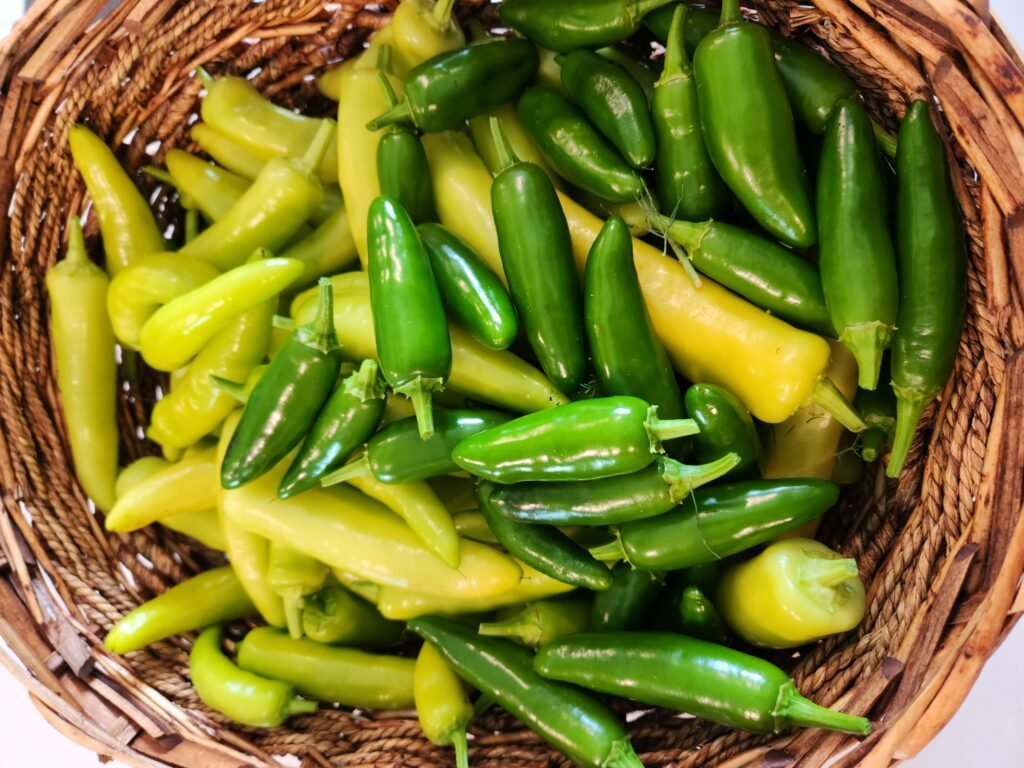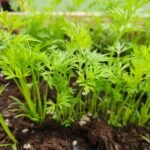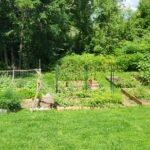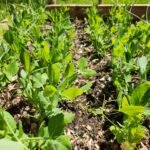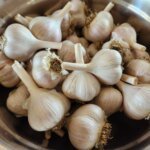We love peppers, also known as capsicum, and they’ve become a must-have in our garden every single year. A pepper plant is one of the most rewarding crops you can grow. Not only do they add vibrant color to your backyard, but they’re also incredibly versatile in the kitchen.
This post contains affiliate links. If you use these links to buy something we may earn a commission. Thanks.
Whether you enjoy eating peppers fresh off the plant, pickling them for winter, blending them into homemade hot sauces, or mixing them into a zesty salsa, peppers truly shine in so many recipes. Check out our Homemade Cayenne Pepper Hot Sauce Recipe for some inspiration.
Living in a cooler climate, we’ve learned firsthand how to successfully grow peppers in Zone 5. While the shorter growing season can sometimes be a challenge, the right varieties and a few tried-and-true techniques make all the difference.
In this growing guide, we’ll walk you through everything you need to know. From starting your pepper plants from seed, to transplanting, caring for them through the season, and finally harvesting a flavorful crop. By the end, you’ll feel confident in growing your own peppers in Zone 5, no matter if you’re a beginner or a seasoned gardener.
What Kind Of Pepper Plants Should I Grow?
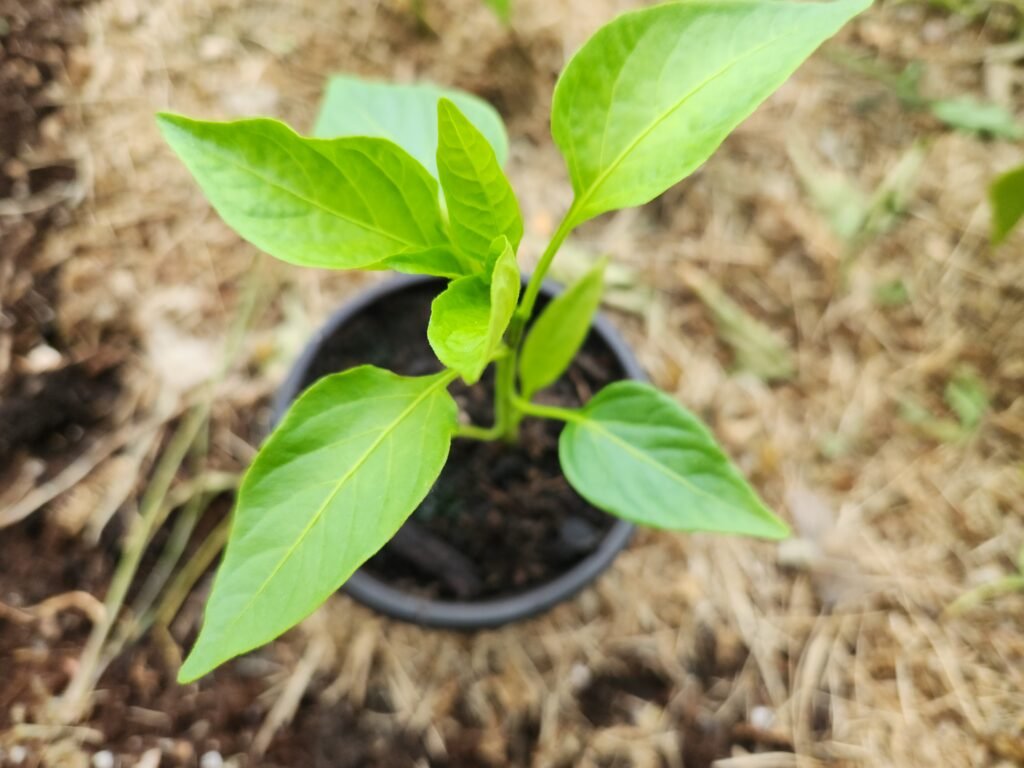
There are almost too many pepper varieties to count. It is truly one of the most customizable crops to grow depending on which peppers you enjoy. Peppers are usually classified by how hot they are. They range from sweet tasting with no heat at all to the most excruciating burn your mouth has ever felt, heat. Peppers are ranked on a heat scale called the “Scoville Scale”.
Example Of The Scoville Scale To Classify Peppers:
- Mild (100 to 2,500)
- Medium (2,500 to 30,000)
- Hot (30,000 to 100,000)
- Extra Hot (100,000 to 300,000)
- Extremely Hot (above 300,000)
The easiest way to pick the variety you want to grow is to figure out how hot of a pepper you want and look at the varieties in that range.
Common Pepper Varieties And Their Heat Units:
- Bell Peppers: Rated a 0 on the Scoville scale for heat units.
- Banana Peppers: Rated mild with a rating of 500 heat units.
- Jalapenos: Rated mild to medium with a range of 2000-8000 heat units.
- Hot Banana Peppers: A medium with a rating of 5000-10,000 heat units.
- Cayenne Peppers: Rated hot with a range from 30,000-50,000 heat units.
- Habanero: Rated extra hot with a range from 100,000-350,000 heat units.
- Carolina Reaper: Rated the hottest pepper in the world with a range from 1,400,000-2,200,000 heat units.
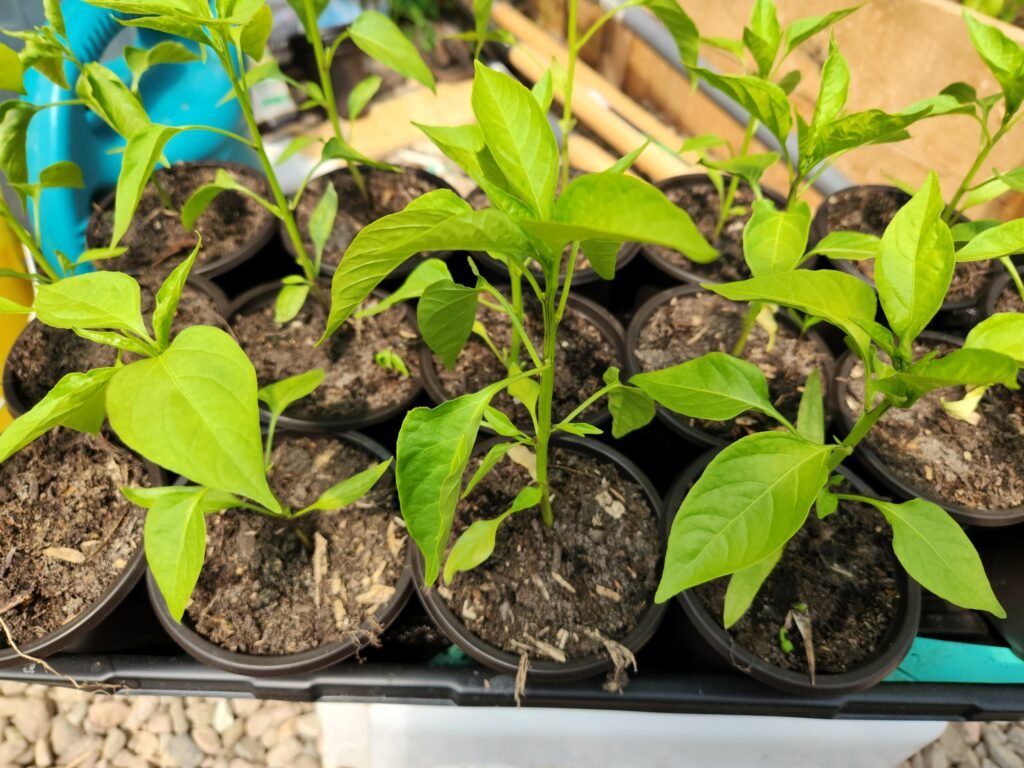
What Are The Best Pepper Plants To Grow In Zone 5 For Beginners?
When you’re learning how to grow peppers in Zone 5, the good news is that most varieties can be successful if you give them a little extra care. There isn’t just one pepper that’s best for beginners. It really comes down to your personal preference and what you plan to use them for. The same growing techniques apply to sweet and hot peppers alike, so the choice is yours.
In our own Zone 5 garden, we love planting fresh jalapeños for snacking and hot banana peppers for pickling. More recently, we’ve added cayenne peppers into the mix so we can make homemade hot sauce.
Friends of ours grow habaneros and Scotch Bonnets in Zone 5 as well. They gifted us a bottle of their hot sauce, and let me tell you, it packed some serious heat!
How To Pick What Pepper Plants To Grow?
You need to ask yourself these questions to help decide which peppers plants are best suited for you.
- Do I like sweet or spicy peppers?
- Am I going to eat peppers fresh or am I going to pickle them?
- Am I making hot sauce with my peppers?
If you answered sweet peppers, then bell peppers will be our choice. If you answered spicy peppers and want to eat them fresh, I would recommend jalapenos. Spicy peppers plus pickling are normally either hot banana peppers or jalapenos. For hot sauce it can be any pepper other than bell peppers.
How Do You Start Peppers From Seed?
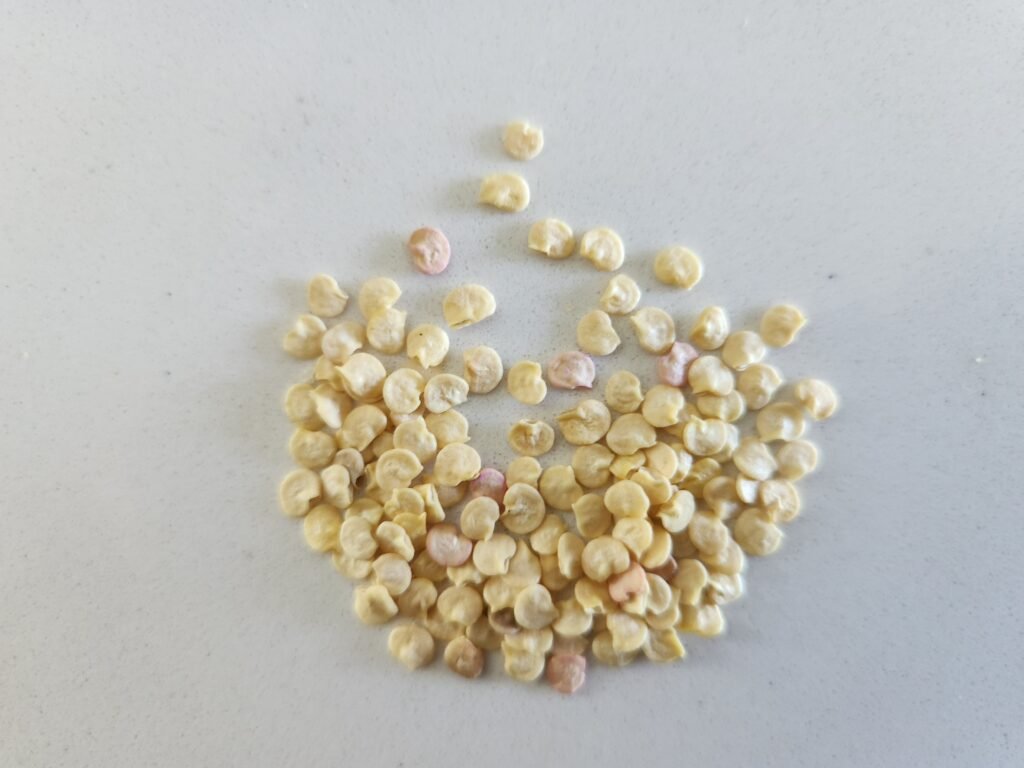
Start your pepper seeds early. Start your seeds 6-8 weeks before you last frost date. They will need to stay in indoors for at least 8 weeks or up to 12 weeks depending on your location and your local weather for that year.
Start your pepper seeds using a high quality seed starting mix and 4 inch containers (I recommend these containers) or in soil blocks using a soil blocker.
We have a guide on how to make soil blocks if you’ve never done it before. Soak your seed starting mix with water and fill your containers or make you soil blocks. Make an indent about 1/4 inch deep in the middle and place 2 pepper seeds in your hole and cover with soil. Keep them in a warm location or on top of a heat mat and use humidity domes to keep in moisture. Peppers need a soil temperature of 75-85ºF (24-29ºC) for good germination.
Since you’re starting your peppers from seeds, you might want to learn about how to save pepper seeds for next years garden as well.
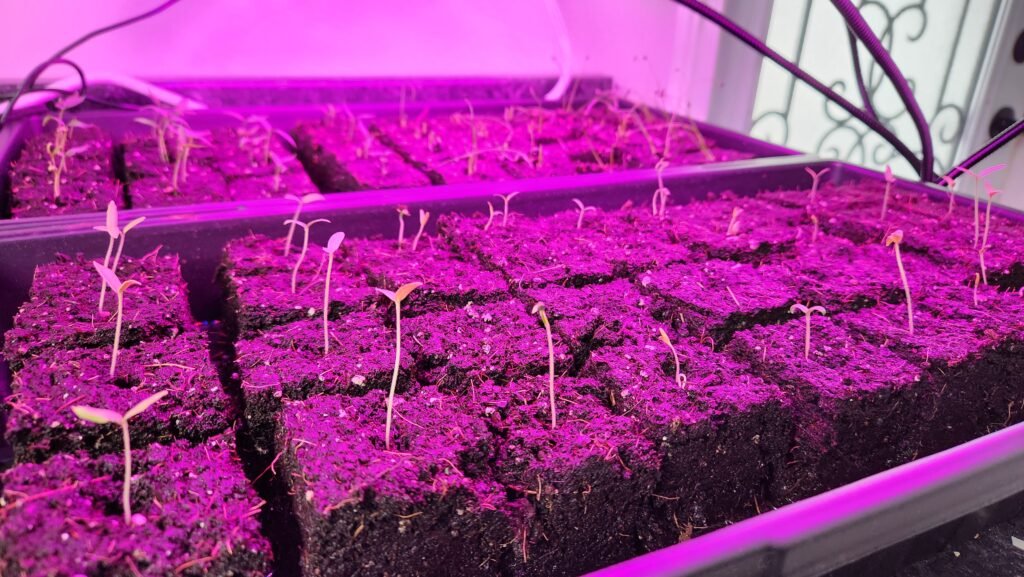
Once the seedlings have emerged keep them in a sunny location that gets at least 6 hours of sun a day. Supplement sunlight with a grow light if needed. When the seedlings have started to grow their first set of true leaves (about 2 inches tall) thin them to leave the single strongest seedling in each container.
It is not recommended to direct sow pepper seeds as it will take up to 2 months before your plant will start to fruit. Unless you are in a warm climate you won’t have enough time before your first frost to have much of a harvest.
Make sure to read our 15 Seed Starting Mistakes That Are Killing Your Plants (And How to Fix Them!) to avoid making any mistakes while starting your peppers seeds.
Transplanting Your Pepper Plants:
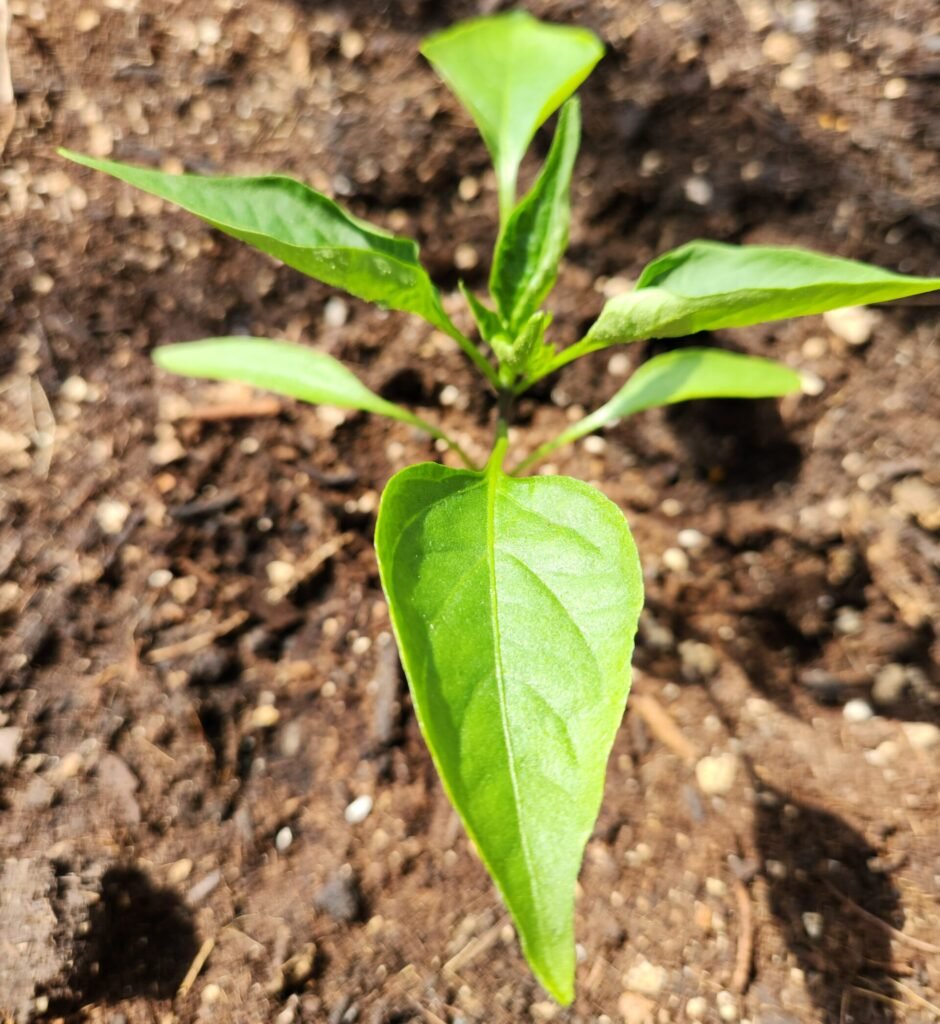
Transplanting peppers from a container to their final resting place is a critical step to having a successful harvest. Lets take a look at some of the important factors we need to consider.
How Much Sun Do Pepper Plants Need?
Peppers love the sun! They require 6-8 hours of direct sunlight a day.
What Kind Of Soil Do Pepper Plants Like?
Peppers should be planted in well draining soil high in organic matter. They like a soil pH between 6.5 and 7. We use this soil tester to make sure we have our soil in the right range.
How Much Space Do Pepper Plants Need?
Pepper plants need approximately 18 inches around each plant. That doesn’t mean you need to have 18 inches in between each plant but rather you need 9 inches between plants. 9 inches on each side will give the plant the 18 inches of space it needs to grow to it’s full potential.
When Can I Transplant Peppers Outside?
Transplant pepper plants outside when there is no more risk of frost in your area. Peppers love hot weather and will grow the best when temperatures are hot during the day and stay above 60ºF (15ºC) at night.
Make sure you’re watching your local forecast as the “last frost date” in your area is an average and not a guarantee. If the pepper plants are subject to freezing conditions they will most likely die.
What Are Good Companion Plants For Peppers?
Carrots: Carrots make great companion plants for peppers. As a root vegetable they grow under the soils surface while the peppers grow above. Carrots also grow large bushy leaves that act as a natural mulch for the peppers that helps keep weeds at bay and retain moisture in the soil.
Dill: Dill is another great companion plant for peppers. It attracts beneficial insects while repelling harmful ones. Dill doesn’t take up a lot of space so it’s easily planted between your rows of pepper plants.
Onions: Onions are great because like Dill they don’t take up a lot of space in the garden and can be planted in between your pepper plants. Onions also repel Aphids, Cabbage Worms, and Slugs making them a great companion.
Caring For Your Pepper Plants:
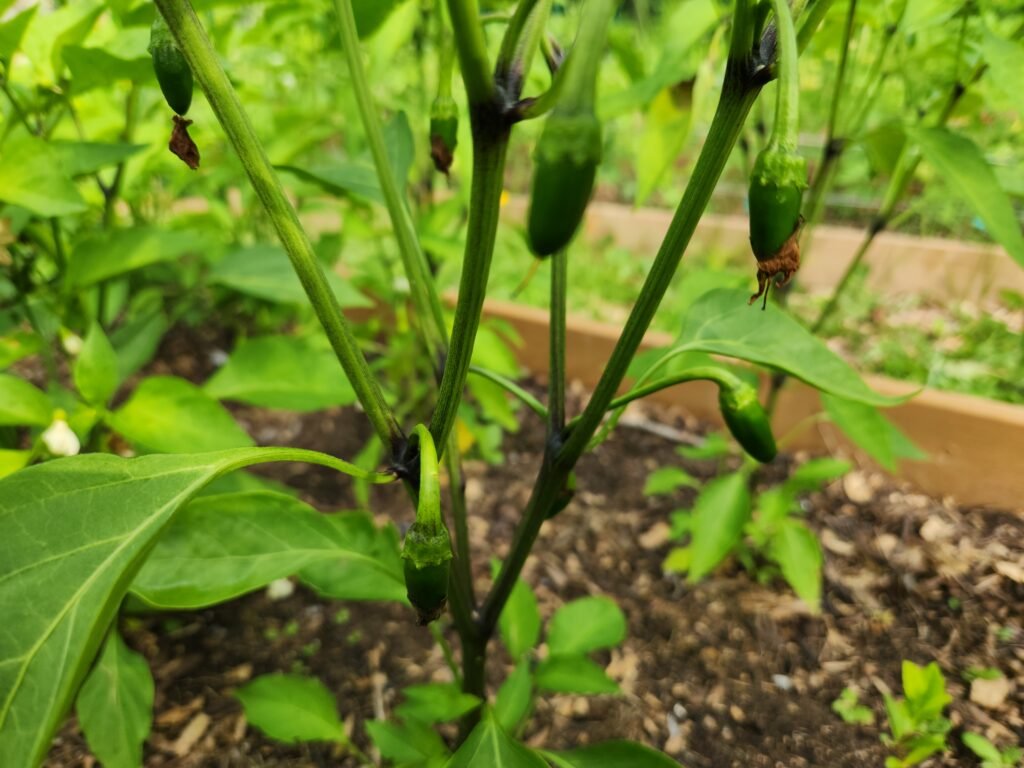
Pepper plants are one of the easier plants to the maintain in our opinion. They don’t require a lot of pruning or trellising which makes them ideal for beginner gardeners. Here’s a few things we do need to do though to help our peppers along the way.
How Much Water Do Pepper Plants Need?
Peppers should be watered about once per week depending on where they are planted and the local weather. If they are planted in a pot they might need to be watered more frequently. Make sure to let you pepper plant dry out before watering again. Pepper plant can be over-watered which will cause the roots to not be able to absorb enough oxygen.
Should I Be Pruning My Pepper Plant?
Pruning pepper plants has more to do with the plants fruit than the leaves and branches. It is a good idea to remove the first few flowers that appear on your plants in the spring to let the plants focus on root growth and stem strength.
Then at the end of the year when you are about 3 weeks away from your last frost date pick off any new flowers and really small peppers. This way the plant will focus on developing the remaining peppers on the plant so you’ll be able to harvest them before you get a frost.
What Is Topping A Pepper Plant?
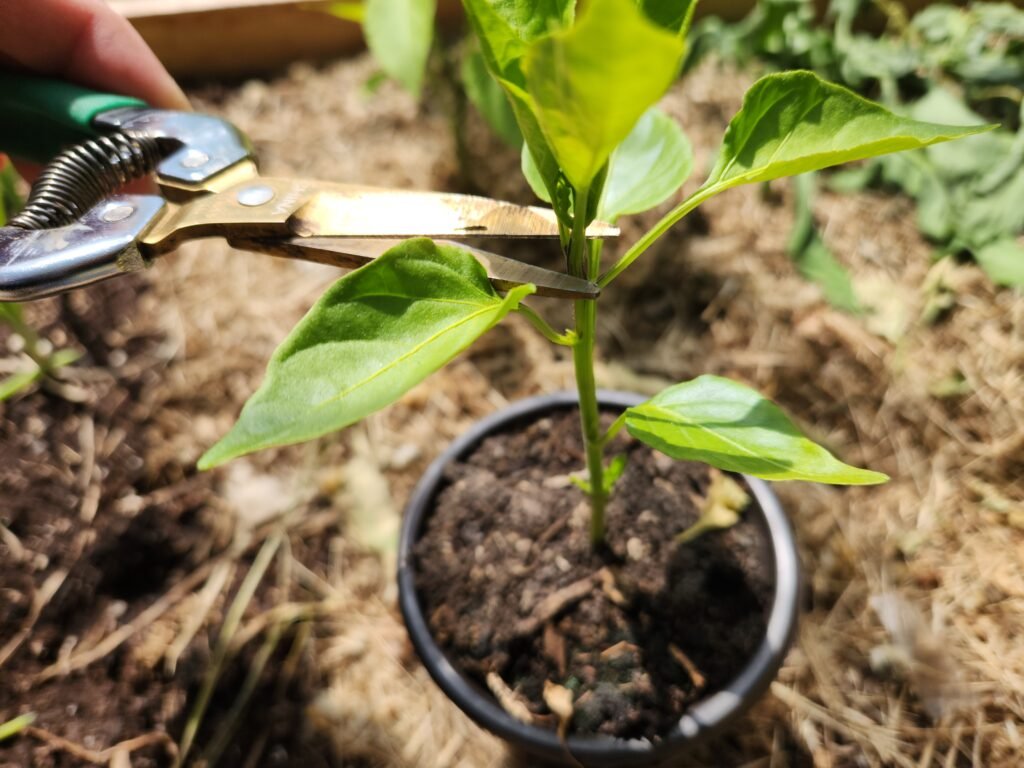
Topping a pepper plant refers to taking the top of the plant off at the early stage of growth. Once the plant has 2 or 3 sets of leaves you remove the top of the plant above that point. This will for the plant to grow 2 new stems our of the junction of the leaves below the cut.
This creates a bushier pepper plant compared to if your left it and it grew naturally. This step is not mandatory, but it is something that has become more popular in recent years.
Before you consider topping your peppers there are a few things you need to consider.
- Do you live in a warm climate? If you live in a region with a short growing season you might not want to top your peppers. It could take the pepper plant too long to recover and you might run out of time before getting much of a harvest.
- Is your pepper plant already too big? Topping peppers needs to be done on a young plant. If the plant is already more than 6 or 8 inches tall it’s probably too late to try to top the plant.
- Is it the right variety to be topped? Topping pepper plants works best with small pepper varieties. If you are growing large bell peppers it is a better idea to not top your plant.
What Kind Of Pests Affect Peppers?
The most common types of pests are Aphids and Spider Mites. Both can and will attack you pepper plant in the early stages of its growth. A soap and water or vinegar and water solution can be sprayed to attempt to control an infestation.
When Can I Harvest Peppers
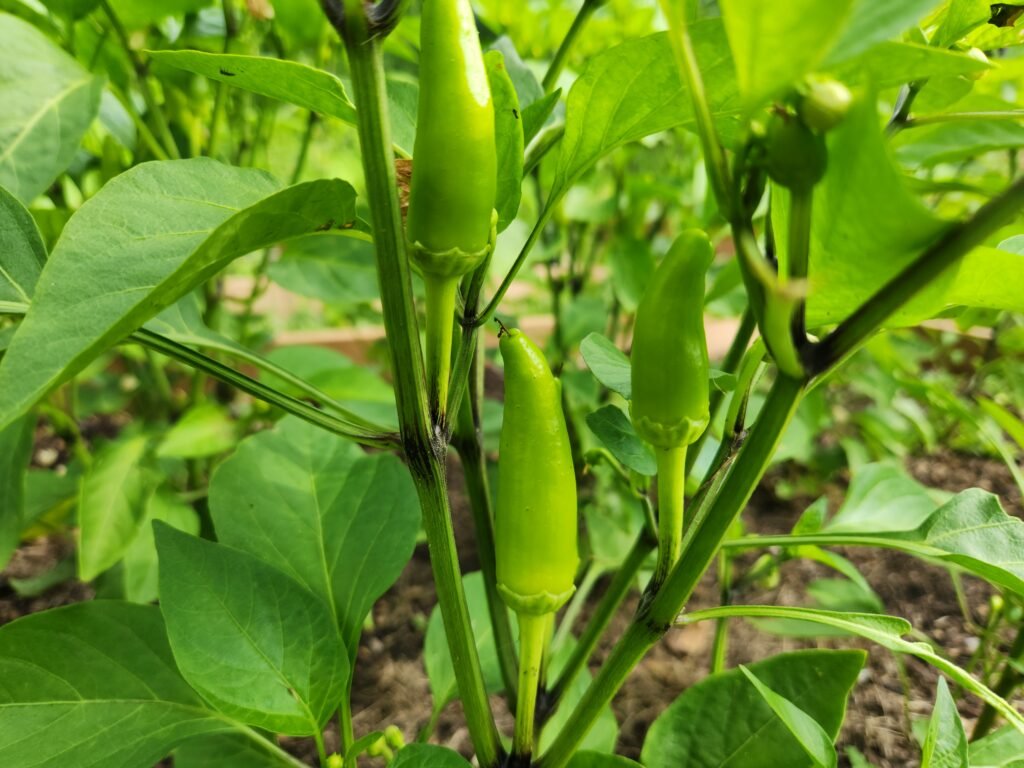
Most peppers can be harvested at any stage while the fruit is growing as long as the pepper is firm and has a glossy exterior. But it is better to let them fully mature before harvesting. All peppers will change colour when they are left to ripen longer.
For example, a red bell pepper is green bell pepper that has been left to ripen. Jalapenos will turn red if left to ripen on the plant long enough even though most people including us pick them when they are still green. It’s more about personal preference and what kind of pepper you want.
How Does Ripeness Affect Pepper Flavor?
The flavor of every pepper changes the longer it is left on the plant. For sweet peppers like bell peppers, the longer it is left on the plant the sweeter they get. A red bell pepper is sweeter than a green bell pepper. The same can be said for hot peppers. The longer they are left to ripen on the pant he hotter they will become.
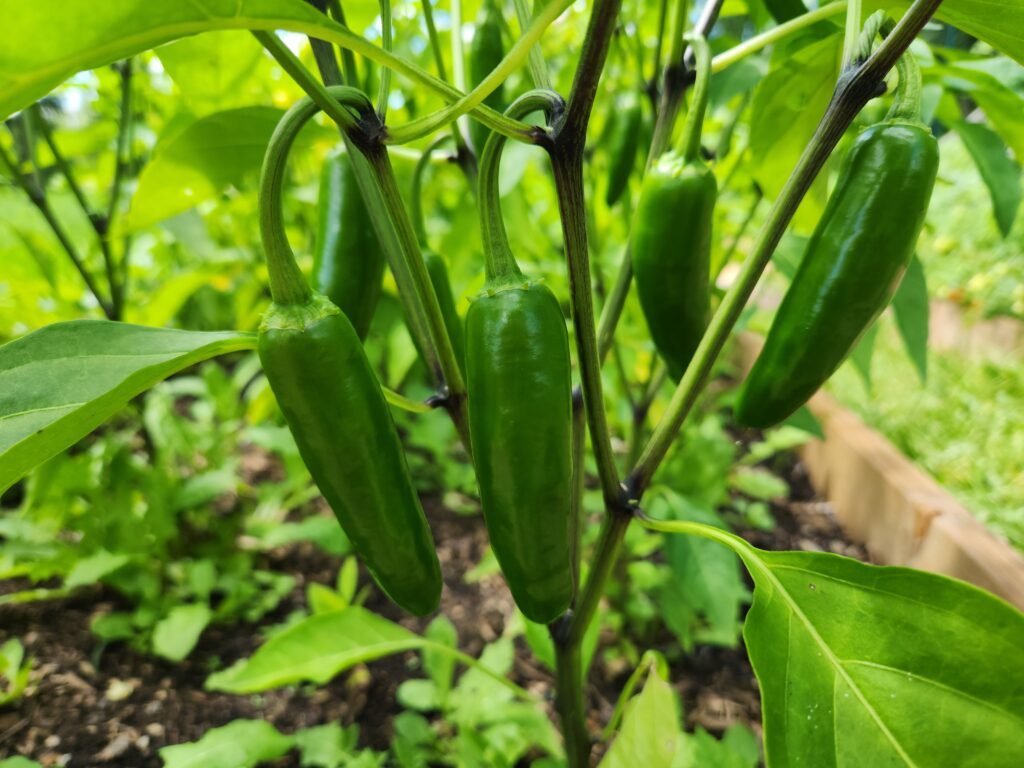
Frequently Asked Questions
Peppers love warmth and sunshine! Ensure they get at least 6–8 hours of direct sunlight daily. Avoid over-fertilizing with nitrogen, as it promotes leafy growth over flowers. A little shake of the plant or gentle breeze also helps with pollination.
Slow growth is often caused by cool soil, lack of nutrients, or overcrowding. Peppers thrive in warm soil (70°F/21°C or higher), so consider using black mulch to retain heat. Also, make sure they have enough space and are getting regular feeding with a balanced fertilizer.
Yes! Different pepper varieties can grow side by side without affecting this season’s fruit. However, if you save seeds, cross-pollination can lead to surprise hybrids next year!
Basil, onions, and marigolds make great pepper companions by deterring pests and improving growth. On the flip side, avoid planting peppers near fennel or kohlrabi, which can stunt their development.
If temperatures soar above 85°F (29°C), peppers may drop their blossoms. Provide afternoon shade using row covers or shade cloth, and keep soil consistently moist to prevent heat stress. A layer of mulch can also help retain moisture.
A little pruning can go a long way! Removing the lowest leaves improves airflow and reduces disease risk. Lightly trimming back some branches mid-season can also help direct energy into fruit production instead of excess foliage.
Absolutely! Choose a container that’s at least 5 gallons with good drainage. Potted peppers need more frequent watering, especially in hot weather, but they thrive with the right care. A support stake can also help keep heavy plants upright.
Capsicum annuum is a species of pepper that includes many common varieties such as bell peppers, jalapenos, cayenne peppers, and banana peppers. It belongs to the Solanaceae (nightshade) family and is widely grown around the world for both culinary and ornamental purposes.
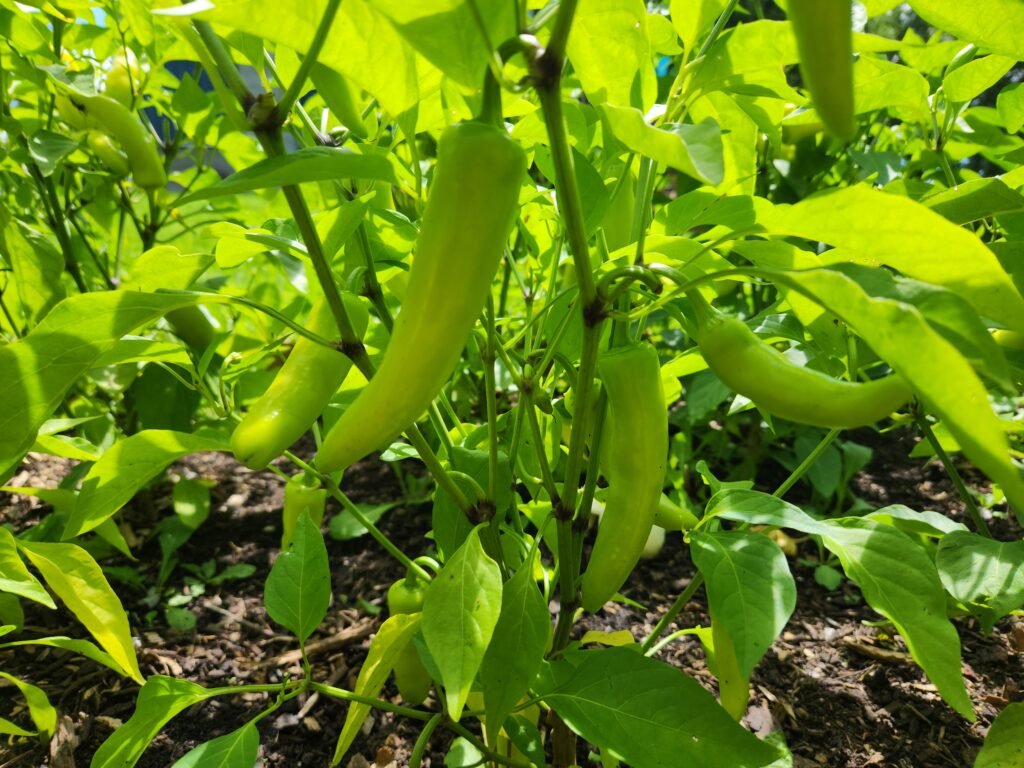
Should I Grow Peppers?
Unequivocally, yes! In almost every section of this growing guide we’ve repeatedly shown how customizable peppers are to the individual gardener. From variety, to heat intensity, to the ripeness of the individual pepper. That’s why we believe they are one of the best plants to start your gardening experience with for beginners and we know they will remain in your garden for years to come.
We hope you enjoyed this growing guide and if you did make sure you check out the others growing guides, seed saving guides and recipes. We are growing our website with more articles all the time, and we invite you to grow with us. Happy gardening!

